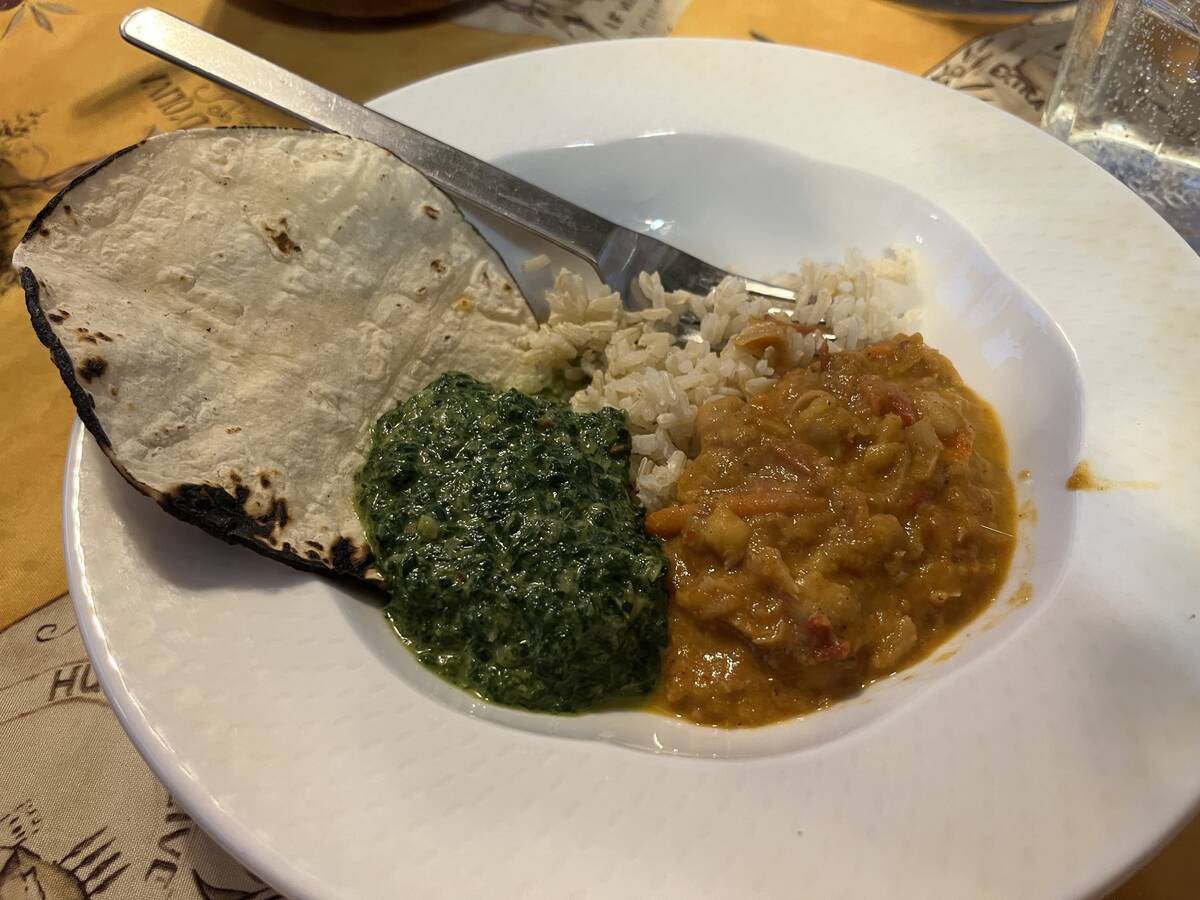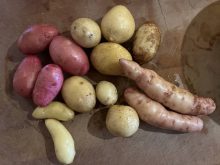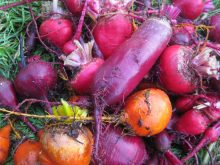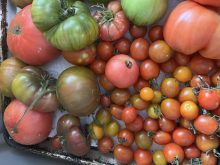Locavore eating has become one of the “elbows up” responses adopted by Canadians in the ongoing trade and tariff hostilities initiated by our biggest trading partner and neighbour, the United States of America. By the time this goes to print, we will have elected a new federal government, which I hope will promptly foster a strong national and interprovincial agreement toward the removal of provincial trade barriers.
Geography is often cited as the pre-eminent Canadian trade barrier, not surprising in a nation that stretches thousands of kilometres from sea to sea to sea (5,500 km east-west, 4,600 km north-south). We have more than distance to contend with: we have towering mountains, major river systems, high Prairies, stony Canadian Shield, and Maritime straits, among others, all serving as natural barriers to the east-west low of goods and services. But any country other than the U.S. is an ocean away. So in our efforts to Gordie-Howe our way into reducing our economic trade with the U.S., we should be looking to the lands within our own lands first. Such a move will alter our supply chain — for the better, I hope.
What needs to be addressed in a move toward free trade within our provinces and territories? How do our businesses and governments step away from shielding local businesses in order to support the broader Canadian welfare? Here’s a short look.
Read Also

Managing through market or individual stock declines
Even the best of public-traded companies can periodically experience significant drawdowns, and a successful investor should be prepared to react — or not react — accordingly, Herman VanGenderen writes.
According to Statistics Canada, and a 2019 International Monetary Fund (IMF) study, it’s not just geography. Provincial regulations also pose imposing barriers. They vary province by province, in packaging and labelling, occupational health and safety, environmental standards, licensing, technical standards and trade certifications. The regulations exist to protect local economies, preserve regional autonomy, and of course generate local income. But even the Bank of Canada believes reducing internal trade barriers would boost our economy while effectively keeping our dollars in Canada. A common farmers’ market parallel point of view estimates that money spent at a local market is prone to a multiplier effect, because the money goes directly into Canadian producers’ pockets and is then re-spent repeatedly within the community, where it supports local businesses and creates work. Admittedly, this might be a simplistic parallel, but if we are not paying for international transportation and unequal dollar values and tariffs, our dollars might go farther if spent at home.
How to make this change happen so we can buy Canadian? (I hope for wines, orchard fruit and cheeses from back east on my table here in the west.) Standardize trucking regulations and re-tool big trucks to make them greener and more fuel-efficient. Recognize professional credentials across provincial borders. Rewrite provincial and federal policies to remove restrictions on interprovincial sales of goods and services. Rebuild the national railroad system to support the transportation of goods at affordable prices. Support small farms that want to feed local consumers as well as the larger ones that want to feed the country. We are small but mighty, 40 million strong, and we don’t consume as much as our southern neighbours, who number over 340 million, so retooling our internal trading is not the entire solution. But it’s a damn good step. So pour some glasses of that good Canadian wine and pass them around. First we eat, then we negotiate with the rest of Canada.

Spinach with mustard seed
I am examining labels of origin more closely than ever. Until my garden and the local farmers’ market are again producing, I buy Canadian greenhouse-grown greens. Mustard seeds are a Prairie staple, shipped to France to be made into mustard, and to India, for mustard oil. Meanwhile, a small number of Canadian producers make artisanal mustards for local markets, province by province. I want to see them all on my table without having to travel across Canada to buy them.
This puree’s seasonings are the suave spices of India, but could easily be changed to Middle Eastern by adding preserved lemon, pomegranate molasses, and sumac. Serve as part of an Indian feast, or simply, with rice, chickpeas, and grilled tortillas or naan. Substitute any other green as available.
Serves 4.
- 1 Tbsp. olive oil
- 1 large onion, minced
- 6 cloves garlic, minced
- 2 Tbsp. grated ginger root
- 1 Tbsp. yellow mustard seed
- 2 tsp. curry powder
- ½ tsp. cumin seed
- ½ cup heavy cream or coconut milk
- 2 bunches spinach, washed and stems discarded
- 1 bunch cilantro
- Salt and freshly cracked pepper to taste
- 1 Tbsp. lemon juice

Heat oil in a sauté pan, then add onion, garlic and ginger. Cook for 5-7 minutes over medium-high heat without colouring. When onions are tender, add mustard seed, curry powder and cumin seed. Cook for 1-2 minutes, until spices are fragrant. Add spinach in handfuls. Cook briefly until it wilts, turning the leaves several times. Add cream or coconut milk, bring to boil and transfer to a food processor with cilantro. Puree to a fine paste, scraping down once or twice as needed. Add salt, pepper and lemon juice. Serve hot.















